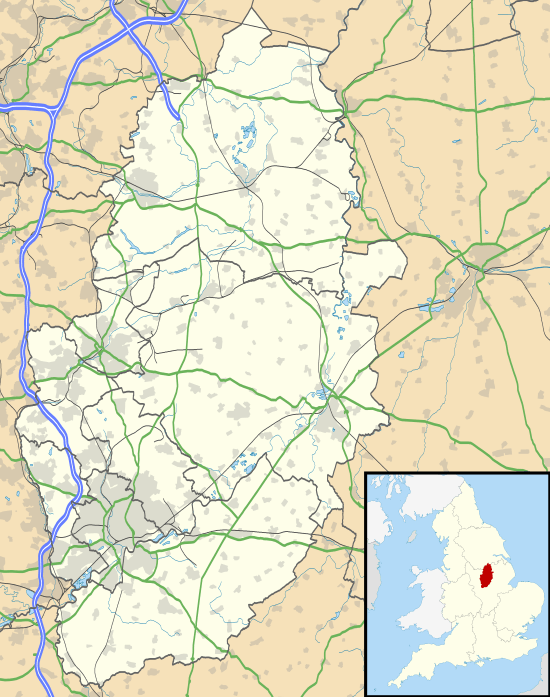Winthorpe Bridge
Winthorpe Bridge is a concrete box girder bridge in east Nottinghamshire.
Winthorpe Bridge | |
|---|---|
.jpg) View in September 2012 | |
| Coordinates | 53.10°N 0.80°W |
| OS grid reference | |
| Carries | A1 |
| Crosses | River Trent |
| Locale | Nottinghamshire, NG23 |
| Maintained by | Highways Agency |
| Heritage status | Grade II listed[1] |
| Characteristics | |
| Material | Reinforced concrete |
| Total length | 520 ft (160 m) |
| Width | 82 ft (25 m) |
| Longest span | 260 ft (79 m) |
| No. of spans | 3 |
| History | |
| Constructed by | Christiani & Nielsen |
| Construction start | March 1962 |
| Construction cost | £465,695 |
| Opened | 27 July 1964 |
| Statistics | |
| Daily traffic | A1 dual carriageway on the Newark bypass |
 Winthorpe Bridge Location in Nottinghamshire | |
History
Construction
The contracts for the bridge were awarded on 20 March 1962 for £495,695, and construction began on 16 July 1962. The six-mile bypass was to cost £3,250,000. It was opened on 27 July 1964, by Ernest Marples.
The bridge was constructed by the Danish bridge-builder Christiani & Nielsen, who also built the M2 Medway Bridge which opened in May 1963. Another Danish civil engineering company Bierrum built the near cooling towers, along the River Trent to the north. The Newark bypass was built by Robert McGregor & Sons who would have laid the concrete pavement on the bridge. The north-bound surface had the concrete pavement laid in forty days, with three concrete-batching sites along the bypass preparing the concrete.
The bridge was Grade II listed (1323680) on 29 May 1998.
Structure
It is situated in Winthorpe, Nottinghamshire. It crosses the River Trent, which is the third-longest river in England, at 185 miles. It is a reinforced-concrete bridge made out of nine box girders.
References
- Historic England. "Details from listed building database (1323680)". National Heritage List for England. Retrieved 9 February 2017.
- Modern British bridges, 1 January 1965, Dorothy Henry, ISBN 0853340587